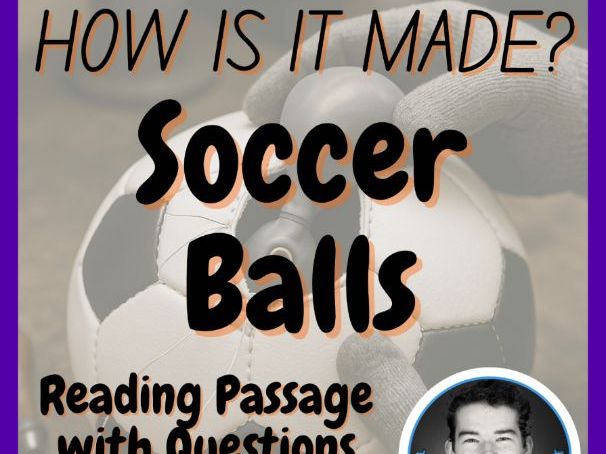

Exploring how a soccer ball is made turns a familiar object into a rich design and technology case study for middle and high school STEM classes. A focused reading passage with questions guides students through materials and manufacturing concepts, it helps prepare them to learn from butyl or latex bladders and textile carcasses to panel geometry, hand stitching versus thermal bonding, adhesives, and heat pressing, plus quality checks for rebound, sphericity, and water uptake. Learners could apply the design cycle as they compare PU and PVC surfaces, analyze tolerances, calculate pressure and mass, and connect surface texture to aerodynamics, friction, and flight stability. The questions support students building technical vocabulary, data interpretation, and cause and effect reasoning while opening discussion on sustainability, worker safety, and lifecycle impacts in a global supply chain. This topic links naturally to physics, geometry, and product testing, supporting quick lessons, cover work, and project based investigations where students sketch improved panels, plan prototypes, and write evidence based claims. Clear comprehension checks, extension problems, and design prompts make this classroom resource engaging, standards aligned, and immediately usable for busy teachers. This process is a great one to learn about and so with that in mind, let’s look into this topic with my useful resource here.
This How is it made? article provides the perfect grab and go, print and provide resource that can supplement lessons. It is an article with questions to check comprehension and inspire design and production thinking. I am very proud of this series of how is it made? articles and they are rich with information and wonder at the majesty of design, production and the manufacturing process.
Each how is it made? article includes a fun fact(s) to add to the knowledge gained from this article. Formatted in an easy to read and digest manner, each paragraph is numbered to help with referencing and each question answer has a paragraph reference number to point to the specific information (where applicable). Two images also to inspire students and get them interested in the subject topic.
WHY / WHEN TO USE:
Useful for substitute (sub) teaching
To enhance design / product thinking / STEM education
To extend students
To increase technical literacy in your class
A weekly reading task
Great as a lesson filler when class goes too fast
To inspire students on a particular topic
Give a selection of these articles for students to choose from
Something went wrong, please try again later.
This resource hasn't been reviewed yet
To ensure quality for our reviews, only customers who have purchased this resource can review it
to let us know if it violates our terms and conditions.
Our customer service team will review your report and will be in touch.